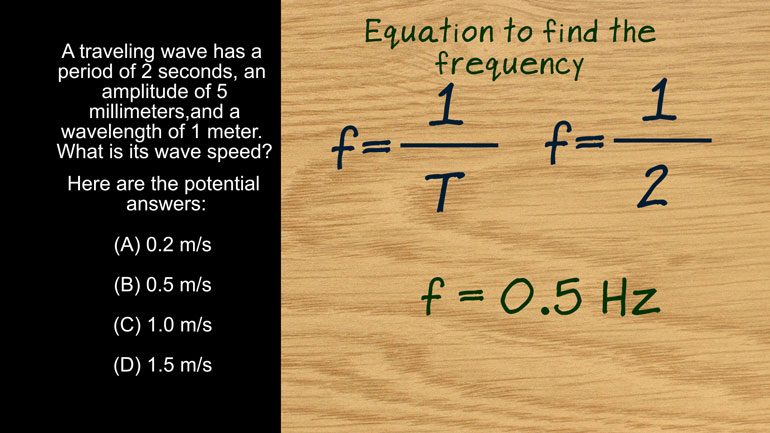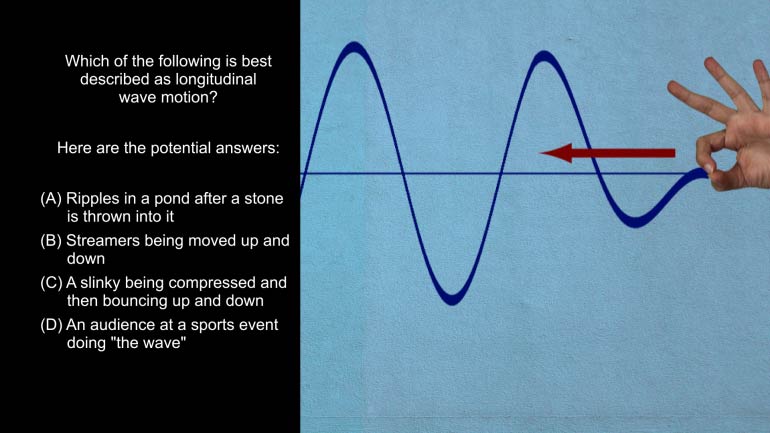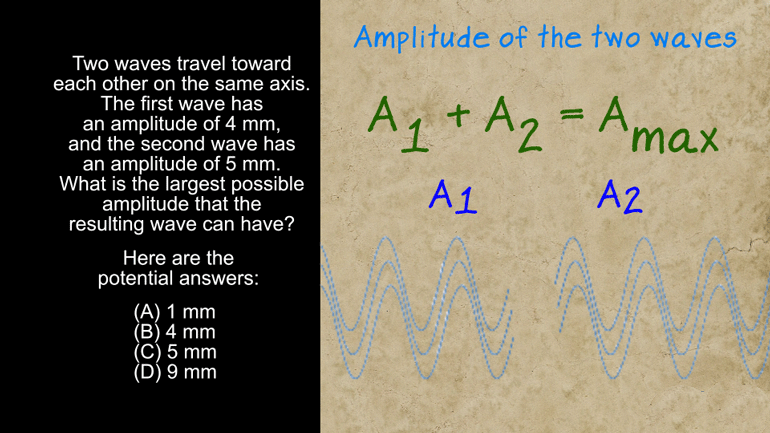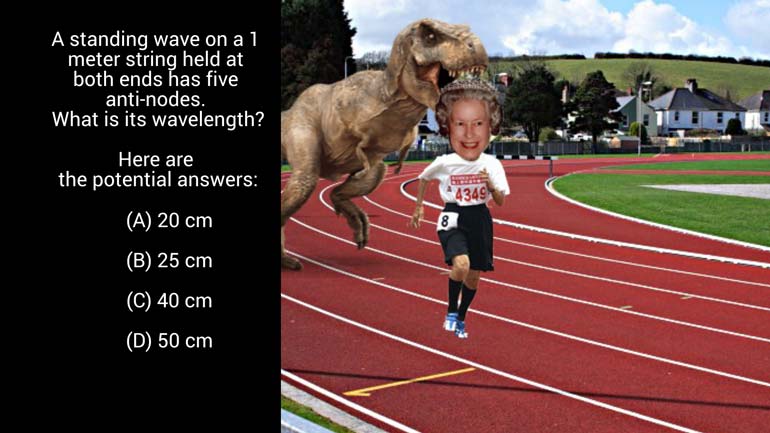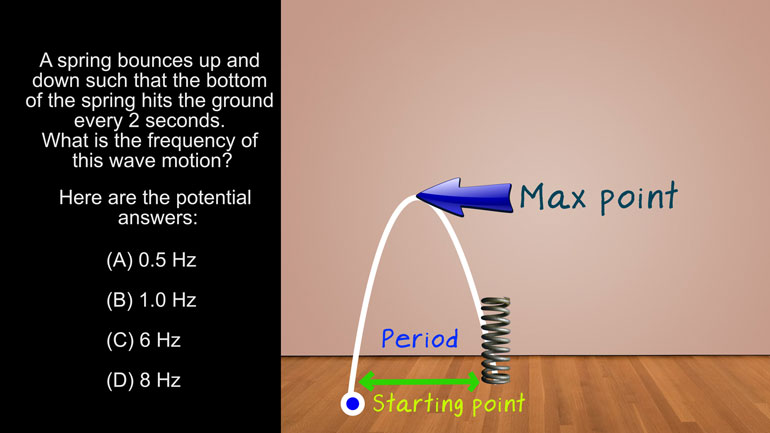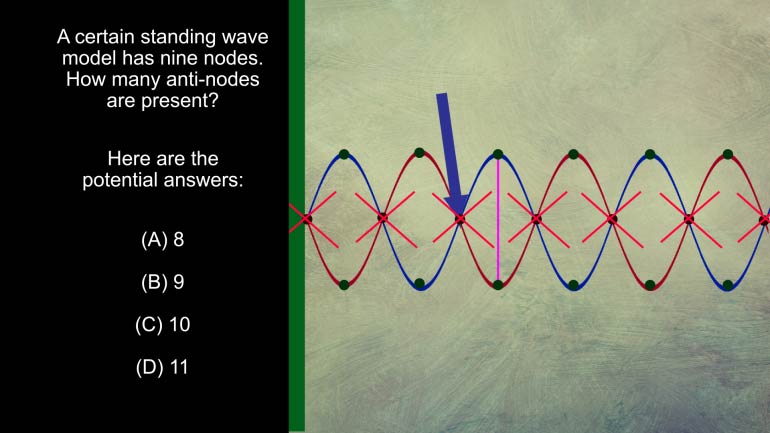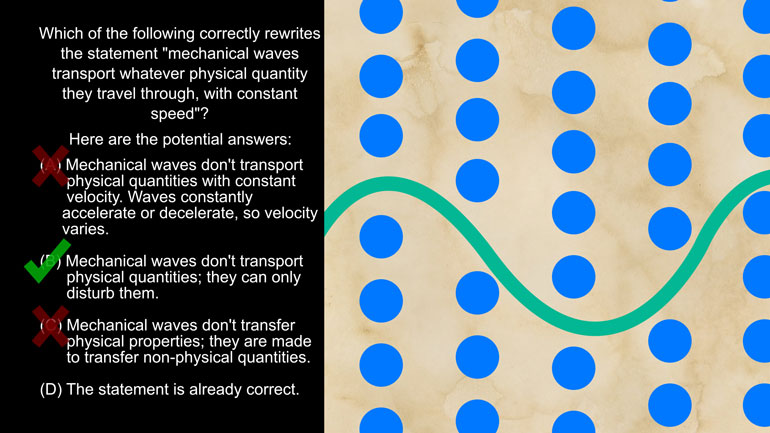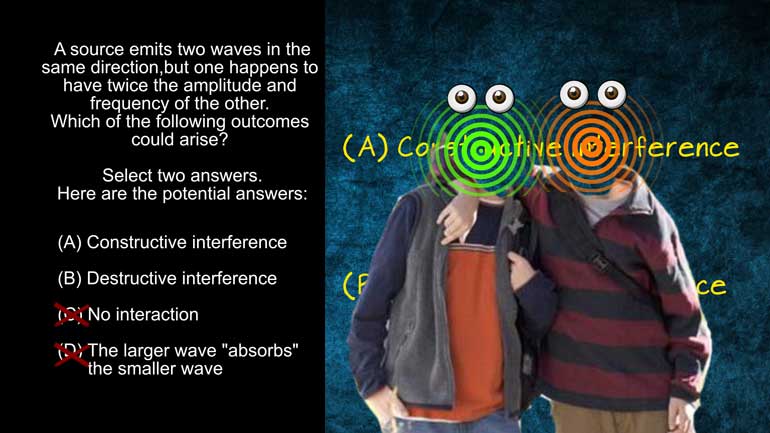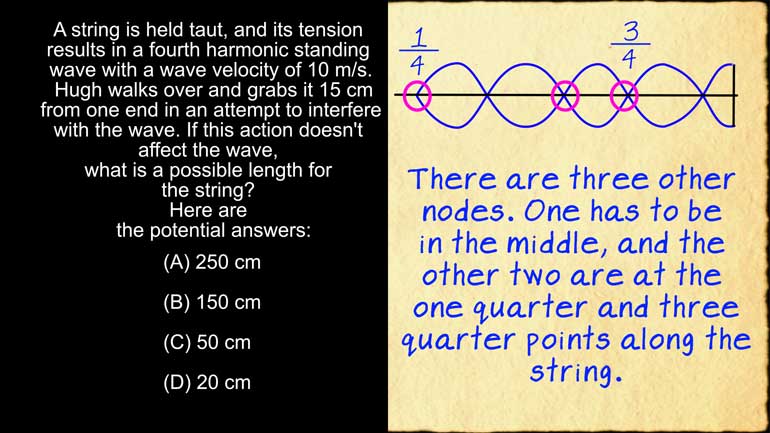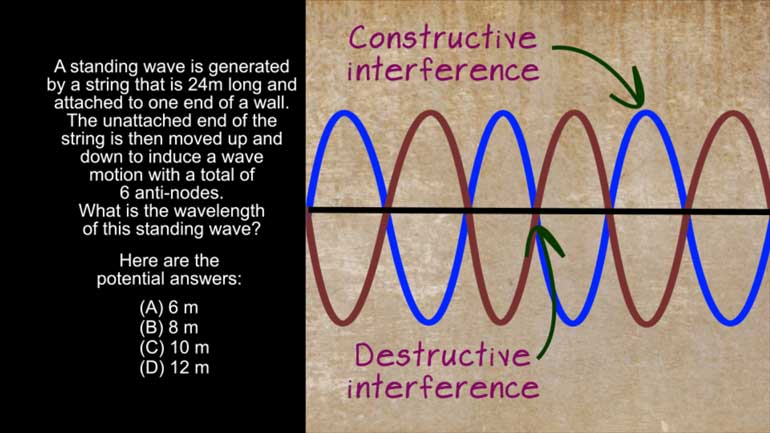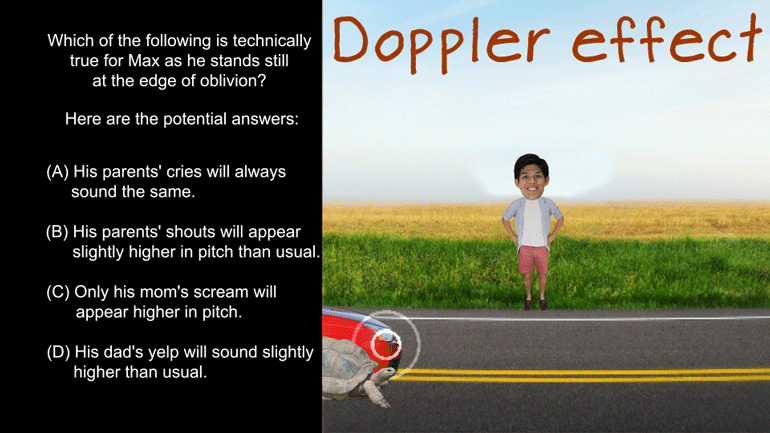ShmoopTube
Where Monty Python meets your 10th grade teacher.
Search Thousands of Shmoop Videos
Waves Videos 15 videos
AP Physics 1: 2.3 Waves. Which of the following is best described as longitudinal wave motion?
AP Physics 1: 2.1 Waves. What is the largest possible amplitude that the resulting wave can have?
AP Physics 1: 1.1 Waves 68 Views
Share It!
Description:
AP Physics 1: 1.1 Waves. What is the frequency of this wave motion?
Transcript
- 00:00
Thank you We sneak and here's your chum up duis
- 00:05
You are brought to you by wave motion a topic
- 00:08
of great importance to physicists and to beauty pageant contestants
- 00:12
everywhere All right a spring bounces up and down such
- 00:17
that the bottom of the spring hits the ground every
Full Transcript
- 00:19
two seconds One two like that What is the frequency
- 00:23
of this wave motion frequency and hear The dental answers
- 00:27
aren't all in hurts All right here we go Well
- 00:31
lot of the time in physics we use springs to
- 00:33
represent waves Why Because everybody loves this slinky that's Why
- 00:38
And also because springs and waves share some important features
- 00:42
If we think of a vertical spring going up and
- 00:44
down it has an amplitude like a wave does It
- 00:47
also has a frequency and a period So a spring
- 00:51
is a good stand in for the features of a
- 00:53
wave in this question were given the period of the
- 00:57
spring will the period of a wave is thie amount
- 00:59
of time it takes to complete one cycle In this
- 01:02
instance we can think of the spring hitting that ground
- 01:05
as the starting point of the period Right there it
- 01:08
springs up to its maximum height then comes back down
- 01:12
to the ground again Well that's one cycle one period
- 01:14
right there The frequency of a wave is the number
- 01:17
of cycle's completed by a wave per unit of time
- 01:21
Well looking at these two functions we can see they're
- 01:24
related In fact they're reciprocal Meaning If you multiply them
- 01:28
well they equal one Okay well so our head doesn't
- 01:31
end up on a spring let's focus and look at
- 01:34
some numbers to make its all clear If a spring
- 01:37
has a period of one second meaning it complete one
- 01:40
cycle in one second then it also has a frequency
- 01:44
of one second But let's speed our spring up And
- 01:48
if a spring has a period of point two five
- 01:50
seconds that it has a frequency of four cycles per
- 01:54
second Right All right Well if we're only given the
- 01:57
frequency or the period we can figure out the rest
- 02:00
Reciprocal with a little algebra Anyway in this question we
- 02:03
know the period equals two seconds We also know that
- 02:06
the period times the frequency equals one So the frequency
- 02:11
has to equal one over two seconds Which means the
- 02:16
frequency equals point Five seconds four point five parts So
- 02:20
the correct answer is a as long as we remember
- 02:22
The reciprocal relationship between period and frequency will be able
- 02:26
to knock these questions out And as long as we
- 02:28
keep our hands slightly cup and just rotated on the
- 02:32
wrist like that we can knock this beauty pageant out 00:02:35.408 --> [endTime] too
Related Videos
AP Physics 1: 1.4 Waves. Which of the following is technically true for Max as he stands at the edge of oblivion?
AP Physics 1: 1.4 Changes and Conservation Laws. Find the current across R2.
AP Physics 1: 2.4 Changes and Conservation Laws. Which of the following circuits should the students use?
AP Physics 1: 1.5 Waves. What can possibly occur when the two waves reach each other?
AP Physics 1: 2.2 Waves. What's the wavelength of this standing wave?
